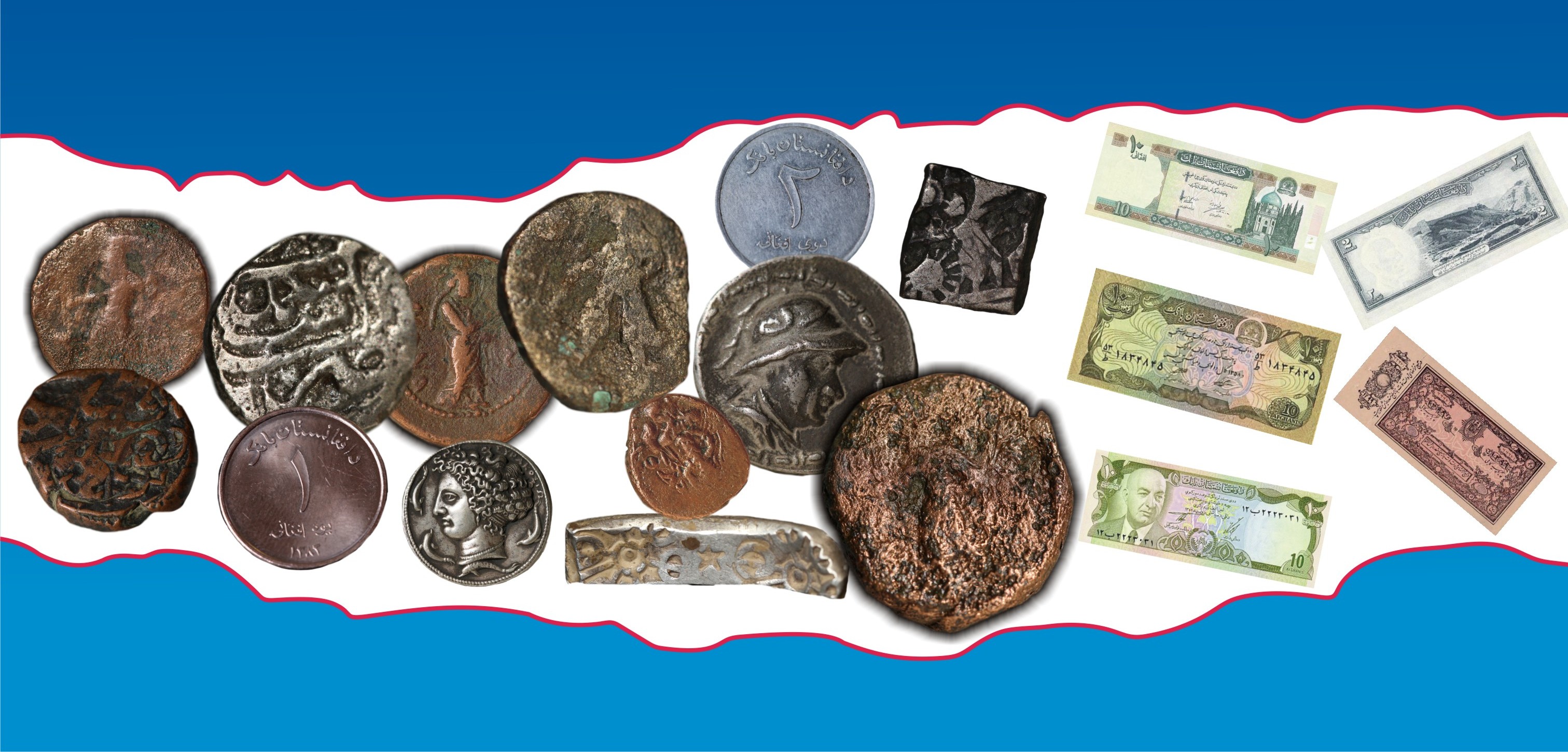Coins and Banknotes
Introduction
Before the creation of coins and banknotes, all transactions were conducted through bartering, a system in which goods were exchanged directly. However, bartering faced many challenges and could not meet the needs of people due to the diversity of products and the evolving nature of trade. As a result, precious metals such as copper, silver, and gold emerged as mediums of exchange, facilitating and advancing the process. This evolution continued with the minting of coins and the printing and issuance of banknotes. Today, transactions are conducted using advanced financial products that have further accelerated and streamlined the exchange process
In Afghanistan, trade and transactions initially began through bartering. Over time, various coins have been used for trade, some minted within Afghanistan and others abroad. Coins from different historical periods, including the Achaemenids, Greco-Bactrian, Saka, Kushanids, Kidarites, Sasanian, the Advent of Islam, Ghaznavids, Seljukids, Ghurids, Ahmadshah Abdali, Amir Abdul Rahman Khan, Habibullah Khan Kalakani, Mohammad Nadir Khan, Mohammad Zahir Shah, Mohammad Daud Khan, the People's Democratic Party, the Islamic State of Afghanistan, and the Islamic Republic of Afghanistan, have all been used for trade and transactions throughout history.
In addition to coins, banknotes were first used in Afghanistan for financial transactions during the reign of Amanullah Khan. Later, the first official banknote of Afghanistan, known as the Kabuli Rupee, was introduced in 1298 HS and was later renamed the Afghani. Banknotes 1, 5, 50, and 100 denominations were issued between 1298 and 1299 HS. Since these banknotes featured text in Pashto, Dari, Urdu, and Turkish, experts believe that the banknotes from the Amani era were likely used in transactions beyond Afghanistan's borders.

During the reign of Habibullah Kalakani, no new banknotes were printed. However, some banknotes from Amanullah Khan's era, bearing Habibullah Kalakani's stamp, were approved and issued. When King Nadir Shah came to power, the circulation of banknotes was discontinued, and, as before, gold and silver coins, and other precious metals were used for transactions. When the issuing of banknotes was halted, new banknote printing machinery was imported to the country. However, no Afghani banknotes were issued until the reign of King Mohammad Zahir Shah.
King Mohammad Zahir Shah came to power in 1312 HS and established a bylaw consisting of 2 chapters and 21 Articles, which led to the reintroduction of banknotes in financial transactions
During the Republic of Daud Khan (1352–1357 HS), the design of the banknotes was altered; the portrait of Mohammad Zahir Shah was replaced with that of Mohammad Daud Khan, and the monarchy symbol was replaced with the republic emblem. During this period, all banknotes were printed in the same design, but with different colors. Banknotes in denominations of 10, 20, 50, 100, and 1,000 were in circulation
With the emergence of the Democratic Republic of Afghanistan during the Rule of Noor Mohammad Taraki and Hafizullah Amin, the logo of “Khalq (people)” was placed on the banknotes. For the first time, Da Afghanistan Bank's symbol was placed on the banknotes in 1358 HS (1979) during the Rule of the Parcham Party – People’s Democratic Party of Afghanistan.
With the inception of the Democratic Republic of Afghanistan under the leadership of Noor Mohammad Taraki and Hafizullah Amin, the 'Khalq' (People) emblem was featured on the banknotes. For the first time, the symbol of Da Afghanistan Bank was also placed on the banknotes in 1358 HS during the rule of the Parcham Party – People’s Democratic Party of Afghanistan.
With the establishment of the Islamic State of Afghanistan, the value of the Afghani depreciated unprecedentedly, leading to excessive printing, accumulation, and multiplication of Afghani currency. The depreciation resulted in the issuance of 5,000 and 10,000 Afghani banknotes, while coins were withdrawn from circulation.
During the Islamic Emirate of Afghanistan, no new banknotes were printed, and the old banknotes from the previous period remained valid for transactions and trade.
After the establishment of the Interim Administration led by H.E. President Hamid Karzai, a monetary reform was developed, which included the removal of 3 zeros from the Afghani currency. The Da Afghanistan Bank subsequently printed and issued new banknotes in denominations of 1, 2, 5, 10, 20, 50, 100, 500, and 1,000 Afghanis, which remained the official currency of Afghanistan.
Meanwhile, coins in denominations of 1, 2, and 5 Afghanis were minted and circulated once again for use in commercial and economic transactions.